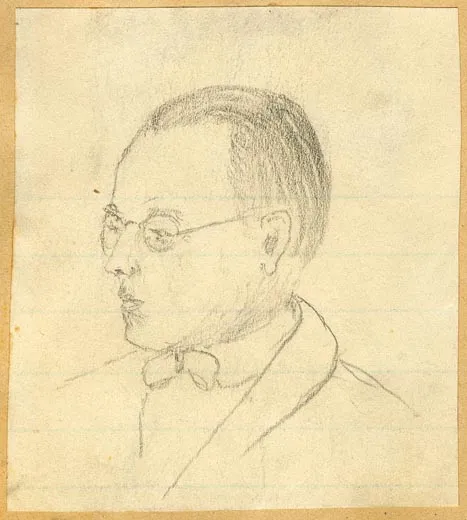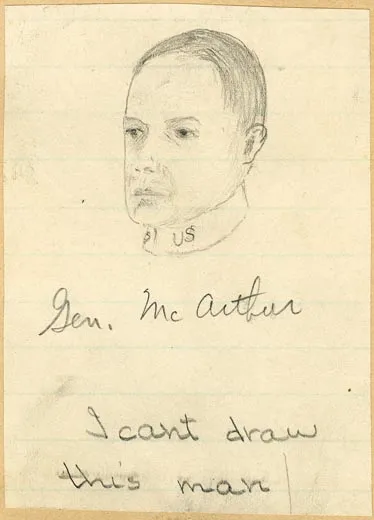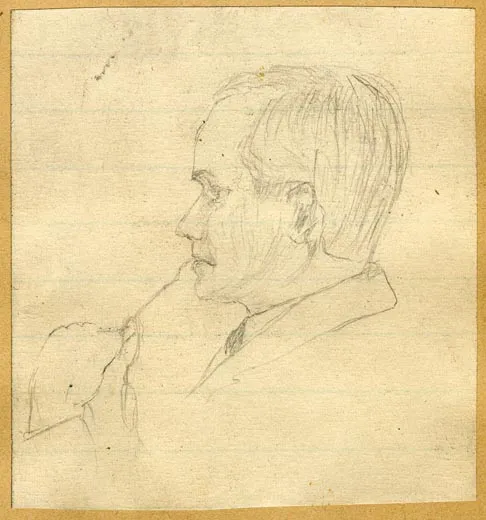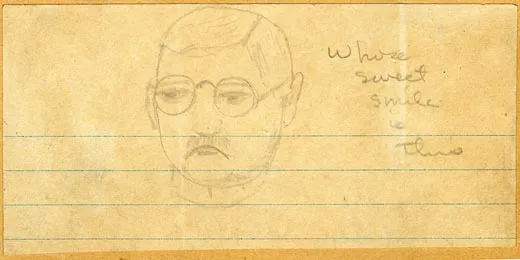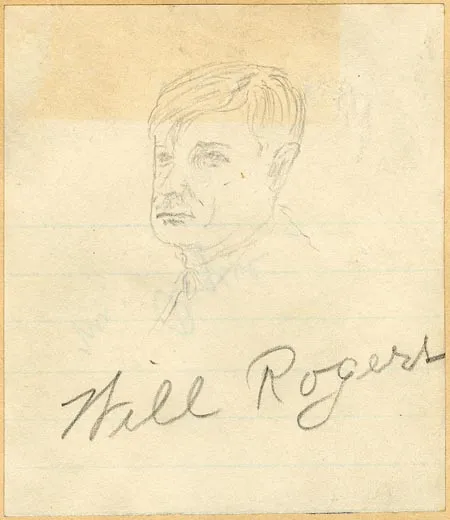The Billy Mitchell Court-Martial
Courtroom sketches from aviation’s Trial of the Century.
/https://tf-cmsv2-smithsonianmag-media.s3.amazonaws.com/filer/Arch_Mitch_Flash_JJ09.jpg)
On October 28, 1925, a young legal aide reported to a ramshackle warehouse at the foot of the Capitol building in Washington, D.C. He placed a stack of legal volumes on a scarred wooden table, then waited for the court-martial of Army Air Service Colonel William “Billy” Mitchell to begin. William H. Webb was fresh out of law school when chief counsel Frank Reid asked him to join the defense team. Barely mentioned in the hundreds of newspaper accounts of the trial, Webb nonetheless impressed a reporter at the Baltimore Evening Sun, who wrote: “[This] wizard of legal research...cannot be seen as he sits hunched behind a big pillar in the courtroom, and as he seldom even whispers, his presence is unnoticed by spectators; and yet, besides Representative Reid, chief counsel, he is probably the most important personage among the Mitchell warriors at the court-martial.... He is the pivot of the defense, and it was his nimble fingers that thumbed the thick legal volumes that Reid quotes so glibly.”
Recognizing the significance of the trial, young Webb compiled scrapbooks of material about his experience: photographs, newspaper clippings, and courtroom sketches made by an unidentified artist. There’s Major General Douglas MacArthur, looking impossibly young; a frowning Major General William Graves, who fought Communists in Siberia; even a drawing of American humorist Will Rogers, who attended the trial to support the defendant. (Mitchell had given Rogers his first airplane ride, and the two had become friends.) William Webb Jr. remembers his father talking about the court-martial for years afterward. “We would look at the scrapbooks and he would give us a general overview of the trial and the people involved in it.” Webb Jr. donated the collection to the National Air and Space Museum in 1992, seven years after his father’s death. “I just thought that would be the place to put it,” he says. “Anybody who had an interest in the trial could come and look at the pictures, the newspaper articles, and so forth.”
How his father came by the sketches is a mystery. Webb Jr. doesn’t know who drew them, but thinks the artist may have been a woman. “My father was trying to capture as much as he could about the trial, and I think he felt the drawings added a little something to the scrapbook itself, so that’s why he put them in,” he says. Sketched by someone in the courtroom as the trial proceeded, the drawings are intimate snapshots of the participants. They have never been published, and have been seen only by those few who have researched the Museum’s Mitchell collection.
The popular Colonel Mitchell was facing a court-martial for his controversial remarks to the press on September 5, blasting two military disasters: a bungled flight during which three Navy seaplanes failed to make it from the West Coast to Hawaii; and the crash of the Navy airship USS Shenandoah while flying over the Midwest on an ill-advised public relations tour. “These incidents are the direct result of the incompetency, criminal negligence and almost treasonable administration of the national defense by the Navy and War Departments,” Mitchell stated. “The bodies of my former companions in the air moulder under the soil in America, and Asia, Europe and Africa, many, yes a great many, sent there directly by official stupidity.”
Within days, the War Department charged Mitchell with violating the Ninety-sixth Article of War, which covered “all conduct of a nature to bring discredit upon the military service.”
At the court-martial, Reid—who took the case for free, hoping it would make him a national figure—argued that Mitchell’s Constitutional right to free speech trumped his duties as an officer. Reid praised his client’s warnings as patriotic, concluding with a flourish, “Rome endured as long as there were Romans; America will endure as long as there are Mitchells.”
The prosecution, however, argued that in the military, free speech would lead to chaos. Claimed the trial judge advocate: “A private can berate his captain before his company, the captain can criticize and ridicule his major before his battalion and the major can lampoon his colonel…. Discipline and control under such a view of law would vanish and the Army become a mob.”
The trial was front-page news. Each morning, nearly 500 spectators lined up outside the warehouse hoping for one of the few courtroom seats reserved for the public. Society matrons, reported the Los Angeles Times, were dismayed at their reception. “Luxuriously equipped limousines drew up along the curbing. Uniformed footmen jumped to open the doors and assist the occupants to the pavement.... The prominent as well as the socially unknown were told in regular doughboy fashion to ‘fall in’ line and await their turn to be admitted.”
Public opinion was for Mitchell, a dashing war hero and unreserved advocate of air power, and stacks of letters poured in. (Mitchell’s wife, Betty, would answer them during courtroom breaks.) Near Thanksgiving a group of Texas cowboys sent a live turkey for the colonel’s holiday dinner and, reported the Washington Herald, offered their services: “If the bunch of us could do any good by standing back of you with Winchesters while you are telling the court about the negligence in the Air Service, we would like to be called as witnesses or guards.”
But the public’s enthusiasm did little good. The defense called 41 witnesses in an attempt to prove that by speaking out, Mitchell hoped to correct the Air Service’s problems. The prosecution, on the other hand, didn’t care if Mitchell’s remarks were truthful or not. They were trying him for insubordination. Because of Mitchell’s high profile and public support, the generals let the defense present its evidence. But their view of Mitchell didn’t change.
In his concluding remarks, Major Allen Gullion, the judge advocate, took a swipe at Mitchell: “Is such a man a safe guide? Is he a constructive person or is he a loose talking imaginative megalomaniac?... Is this man a Moses, fitted to lead the people out of a wilderness?... Is he not rather the all too familiar charlatan and demagogue type...and except for a decided difference in poise and mental powers in Burr’s favor, like Aaron Burr?”
After more than seven weeks of testimony and 99 witnesses, the court-martial came to a close. In a secret ballot, the court sentenced Mitchell to a suspension from rank, command, and duty, with forfeiture of all pay for five years. “The Court is thus lenient because of the military record of the Accused during the World War,” the generals wrote.
Unwilling to accept the verdict, Mitchell resigned as an officer in the U.S. Army on February 1, 1926.
